Jeffrey Dahmer, also known as the Milwaukee Cannibal, is one of the most infamous serial killers in history. His gruesome crimes shocked the world, as he was responsible for the brutal murders of 17 young men between 1978 and 1991. Dahmer’s case is a chilling reminder of the darkness that can exist within the human mind, and his story continues to fascinate and horrify people to this day. But what drove him to commit such atrocities? We’ll explore the twisted mind of Jeffrey Dahmer and examine the psychological factors that contributed to his transformation into a serial killer.
Table of Contents
Early Life and Troubled Adolescence: Jeffrey Dahmer

Jeffrey Lionel Dahmer’s entry into the world on May 21, 1960, in Milwaukee, Wisconsin, did not foreshadow the monstrous path he would later tread. His early years appeared ordinary, marked by a typical suburban upbringing with his parents and younger brother. However, beneath the veneer of normalcy, a darkness began to stir within the young Jeffrey. As he progressed through childhood, he became increasingly introverted and isolated, withdrawing from social interactions and preferring solitary pursuits.
One of the most unsettling aspects of Jeffrey’s childhood was his morbid fascination with dead animals. He developed a disturbing habit of collecting roadkill and animal remains, bringing them home to dissect and examine in his backyard shed. This cadaverous curiosity, which initially seemed like a harmless hobby, would later become a chilling precursor to the atrocities he would commit against fellow human beings.
Jeffrey’s adolescence was marked by a growing sense of alienation and inner turmoil. He grappled with his burgeoning sexuality, harboring feelings of confusion and shame in a society that was less tolerant of homosexuality. This internal struggle, combined with his already introverted nature, fueled his isolation and made it difficult for him to form meaningful connections with others.
Seeking solace and escape, Jeffrey turned to alcohol as a coping mechanism. He began drinking heavily, often to the point of intoxication. This alcohol dependence not only served as a reprieve from his inner demons but also further exacerbated his social difficulties, pushing him further into the depths of loneliness and despair.
In 1987, Dahmer’s murderous urges returned, leading him to kill Steven Tuomi in a hotel room after a night of drinking. This marked a shift in his modus operandi, as he became bolder and more willing to venture outside his usual hunting grounds. Dahmer’s subsequent actions, including dismemberment and necrophilia, revealed a deepening depravity and foreshadowed the horrors to come.
Jeffrey Dahmer High School Years: A Disturbed Adolescence
Jeffrey attended Revere High School in Richfield, Ohio, graduating in 1978. While outwardly appearing like a typical student, his high school years were marked by increasing isolation, disturbing behaviors, and escalating alcohol abuse.
Jeffrey’s grades were average, but he showed some interest in science and biology. He participated in the National Honor Society, indicating some academic achievement. However, his alcohol abuse began to affect his performance as he progressed through high school.
He was largely perceived as a loner and an outcast. Classmates recall his odd pranks and disruptive behaviors, including simulated seizures and “spazzing out. He developed a reputation for heavy drinking, often consuming alcohol on school grounds. His fascination with dead animals intensified during this time, leading to increasingly disturbing actions like collecting roadkill and dissecting them.
Jeffrey Dahmer Yearbook: A Glimpse into a Troubled Past
Jeffrey Dahmer’s high school yearbook offers a chilling juxtaposition between an ordinary teenage life and the horrifying crimes he would later commit. In the 1978 Reverie yearbook from Revere High School, Jeffrey appears as a seemingly typical student. He’s pictured in a suit and tie, his expression neutral. However, in several club photos, his face is notably obscured. This was reportedly due to his tendency to photobomb pictures as a prank.
The yearbook also lists Jeffrey’s involvement in the school’s tennis team and National Honor Society. These details create a stark contrast with the knowledge of his future acts, making the yearbook a haunting artifact. His yearbook has become a sought-after item for collectors of true crime memorabilia. It’s a tangible piece of history connected to one of the most infamous serial killers, offering a disturbing glimpse into his formative years.

Jeffrey Dahmer Relationships: Marked by Isolation and Dysfunction
Jeffrey Dahmer’s life was characterized by a profound sense of isolation and a series of deeply dysfunctional relationships, both romantic and familial. These troubled connections likely contributed to his psychological instability and the horrific crimes he committed.
He had few romantic relationships, mostly brief encounters with men he met at gay bars or bathhouses. His interactions were often fueled by his desire for control and his predatory tendencies. His inability to form genuine emotional connections and his intense feelings of loneliness further isolated him and fueled his destructive behavior.
His relationship with his parents was complex and marked by emotional distance. His parents’ divorce during his teenage years likely exacerbated his feelings of instability and abandonment. Jeffrey’s family failed to recognize or address the severity of his mental health issues and disturbing behaviors, missing opportunities for intervention. His withdrawal from his family and his lack of a strong support system further contributed to his descent into darkness.
The Gruesome Initiation: The Murder of Steven Hicks
In the summer of 1978, just weeks after graduating high school, Jeffrey committed his first murder, marking the beginning of his descent into a life of unspeakable horrors. His victim was 18-year-old Steven Hicks, a hitchhiker whom Jeffrey lured to his parents’ home with the promise of alcohol and companionship.
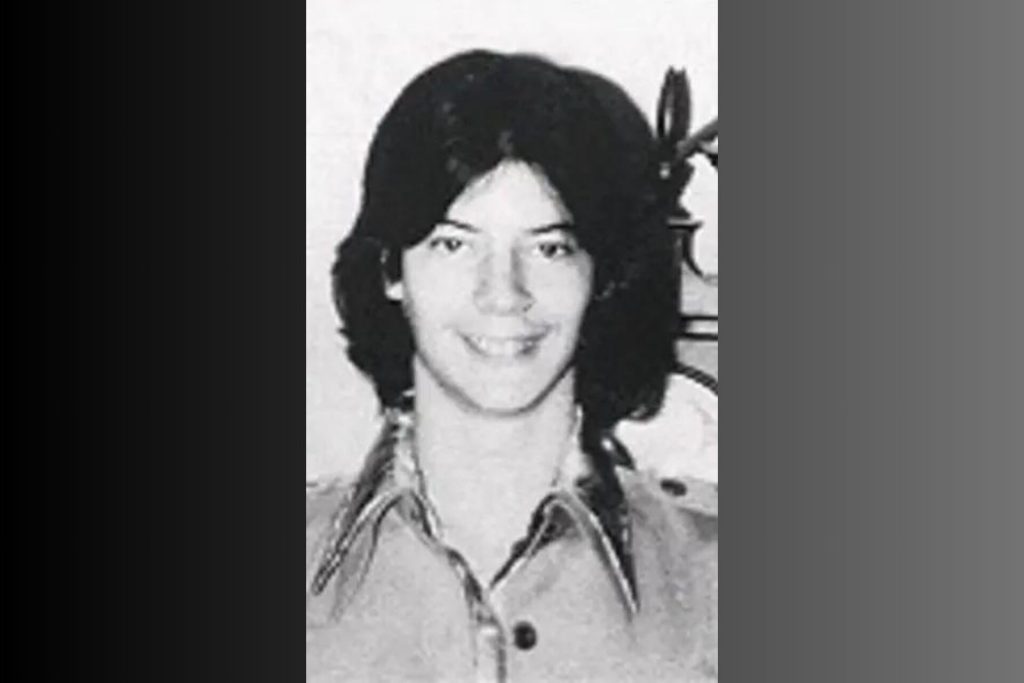
After spending several hours together drinking and listening to music, Steven decided to leave. However, Jeffrey was fueled by a twisted desire for control and a burgeoning sense of his own dark impulses, refusing to let Steven leave. In a fit of rage and panic, he struck Steven twice in the head from behind with a 10-pound dumbbell, killing him instantly.
The brutality of the act was only the beginning of Jeffrey’s depravity. In the days that followed, he dragged Steven’s body to the basement, where he meticulously dismembered it, dissecting the remains and separating the flesh from the bones. He then dissolved the flesh in acid, flushing the gruesome solution down the toilet. The bones were crushed with a sledgehammer and scattered in the woods behind the house, while Steven’s belongings were discarded in a nearby river.
His murder indicated a chilling turning point in Jeffrey’s life. It was the first time he had acted on his dark fantasies, and the experience proved to be both exhilarating and terrifying. The thrill of power and control he felt over his victim ignited a fire within him, a fire that would continue to burn and consume him for the next 13 years. This initial act of violence set him on a path of unimaginable cruelty, forever scarring the lives of countless victims and their families.
The Milwaukee Monster’s Early Target: The Murder of Steven Tuomi
Following a nine-year hiatus, Jeffrey’s murderous impulses resurfaced in 1987, targeting 25-year-old Steven Tuomi. Their encounter in a Milwaukee bar quickly turned sinister as Jeffrey lured Steven back to a hotel room under the pretense of continuing their evening together.

However, Jeffrey’s intentions were far more sinister than Steven could have imagined. He drugged the unsuspecting young man and proceeded to beat him to death in a brutal and senseless act of violence.
Jeffrey later confessed that he had no recollection of the murder itself, attributing his amnesia to his inebriated state. However, the act was a significant turning point in his criminal career, as it marked a departure from the isolated confines of his previous murder. The hotel room setting indicated a growing boldness and a willingness to venture outside his comfort zone to find victims.
But the true horror of this crime extended far beyond the act of murder itself. In the aftermath of Steven’s death, Jeffrey transported the body to his grandmother’s house, where he indulged in the gruesome rituals of dismemberment and necrophilia that would become his signature. This marked a chilling escalation in his depravity, revealing the depths of his psychopathy and foreshadowing the atrocities he would commit in the years to come.
The murder of Steven Tuomi was not just a tragic loss of life but a harbinger of the darkness that was about to engulf Milwaukee. It set the stage for a reign of terror that would see Jeffrey claim the lives of 15 more victims, each death more gruesome and disturbing than the last. This pivotal moment in Jeffrey’s criminal history unveiled a monster who would stop at nothing to satisfy his twisted desires, leaving a trail of devastation and heartbreak in his wake.
The Inescapable Spiral: The Killing Spree
The initial murders of Steven Hicks and Steven Tuomi were not isolated incidents, but rather the catalyst for a 13-year descent into monstrosity. Jeffrey’s predatory instincts intensified, and he began actively seeking out victims to satisfy his dark desires. His targets were primarily young men and boys, often from marginalized communities, whom he perceived as vulnerable and less likely to be missed.
His modus operandi was chillingly consistent. He would lure his victims to his apartment with promises of money, alcohol, or drugs, exploiting their vulnerabilities and desires. Once inside his lair, he would drug them, rendering them unconscious and helpless. In most cases, he would then strangle them to death, a method he found efficient and quiet.
He would then dismember the bodies, meticulously cutting them into pieces and disposing of the remains in various ways. Some body parts were discarded in dumpsters or buried in his backyard, while others were kept as macabre trophies, a testament to his twisted sense of power and control.
Jeffrey’s apartment, located in a seemingly ordinary Milwaukee neighborhood, became a veritable house of horrors. The stench of decay permeated the air, as human remains were hidden in closets, drawers, and even the refrigerator. He experimented with different methods of preserving body parts, hoping to keep them as grotesque mementos of his crimes. He boiled bones in chemicals, attempted to dissolve flesh in acid, and even resorted to cannibalism, consuming parts of his victims in a desperate attempt to make them a permanent part of him.
The sheer depravity of Jeffrey’s actions is difficult to comprehend. He was driven by a complex mix of psychological factors, including a deep-seated desire for control, a fascination with death and decay, and a profound sense of loneliness and isolation. His apartment became a twisted sanctuary, a place where he could indulge his darkest fantasies without fear of discovery.
For years, Dahmer managed to evade detection, his crimes remaining hidden behind the facade of normalcy he presented to the outside world. However, the stench of death and the mounting pile of human remains in his apartment eventually became impossible to ignore. In 1991, a chance encounter with one of his intended victims would finally expose the horrors that lay hidden within his home.
The Fateful Intersection: Jeffrey’s Encounter with Konerak Sinthasomphone
In a tragic twist of fate, the paths of Jeffrey and 14-year-old Konerak Sinthasomphone crossed on the evening of May 27, 1991, near Milwaukee’s Marquette University. Konerak, a Laotian immigrant, was a carefree teenager who found himself enticed by Jeffrey’s seemingly innocuous proposition: the offer of money for posing in photographs. Unbeknownst to Konerak, this seemingly harmless encounter would be his last.

Jeffrey, a master manipulator, preyed upon Konerak’s innocence and naivety, using the promise of easy money to lure him back to his apartment. The unsuspecting teenager, perhaps blinded by the prospect of financial gain or simply unable to comprehend the danger he was in, followed Jeffrey willingly, unaware that he was stepping into a chamber of horrors.
Upon entering Jeffrey’s apartment, Konerak was drugged and subjected to the same gruesome fate as many of Jeffrey’s previous victims. However, unlike the others, Konerak’s story did not end there. In a bizarre turn of events, he managed to escape the apartment while the serial killer was out purchasing more alcohol. Naked and disoriented, Konerak wandered the streets, eventually encountering three concerned women who immediately called the police.
This fateful encounter with law enforcement revealed a series of disturbing failures on the part of the police, who initially dismissed Konerak’s claims and returned him to Jeffrey’s custody, believing the situation to be a domestic dispute between two consenting adults. This tragic oversight would have devastating consequences, as Konerak was murdered shortly after being returned to Jeffrey’s apartment.
The Walls Close In: Jeffrey Dahmer Arrested
The seemingly endless nightmare of Jeffrey’s reign of terror finally reached its dramatic conclusion in the sweltering heat of July 1991. On a fateful night, Tracy Edwards, a young man who had narrowly escaped Jeffrey’s clutches, stumbled into the streets of Milwaukee, his wrists adorned with handcuffs that served as a chilling reminder of the horrors he had endured. Tracy managed to flag down a passing police car, frantically recounting his harrowing escape from Jeffrey’s apartment.
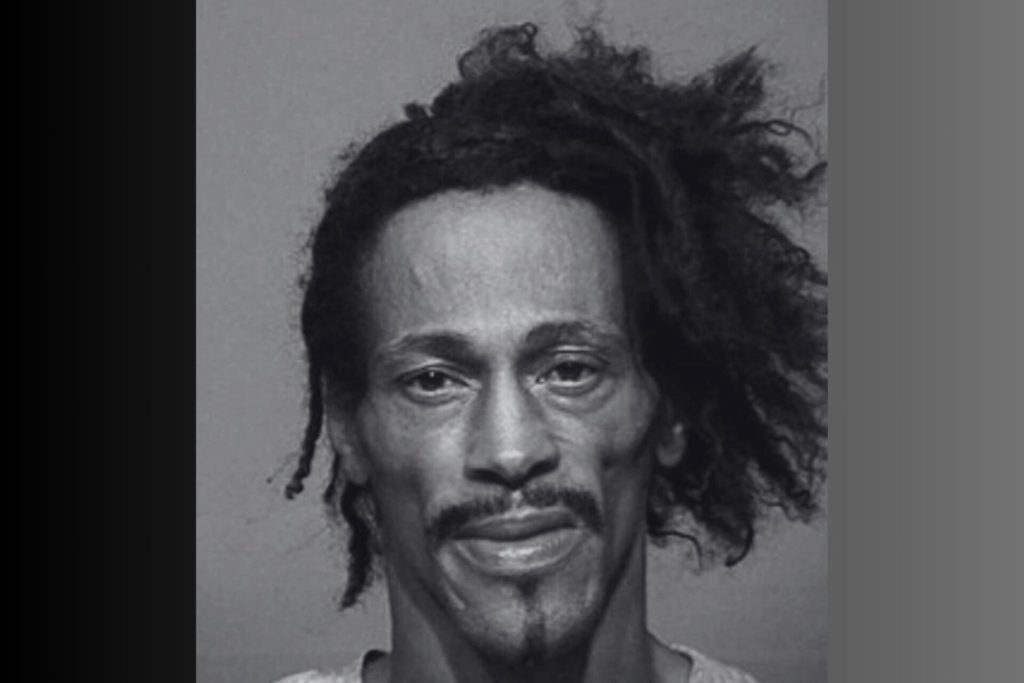
Driven by Tracy’s terrifying tale, two police officers accompanied him back to the unassuming Oxford Apartments, where Jeffrey resided. What they discovered upon entering the premises defied comprehension, a macabre scene straight out of a horror film. The stench of decay hung heavy in the air, and the apartment was littered with evidence of unspeakable atrocities. Human remains, in various stages of decomposition, were scattered throughout the dwelling, a gruesome testament to Jeffrey’s insatiable thirst for violence.
Polaroid photographs of mutilated bodies adorned the walls, and a refrigerator held severed heads and other body parts, preserved in a grotesque attempt to prolong his perverse pleasures. The sheer scale of the carnage was overwhelming.
Jeffrey, caught red-handed amidst the gruesome evidence of his crimes, was promptly arrested. In the subsequent interrogation, he confessed to his horrific deeds in chilling detail, recounting the murders, dismemberments, and acts of necrophilia he had committed. His confession sent shockwaves through the community and the nation, as the true extent of his evil became horrifyingly clear.
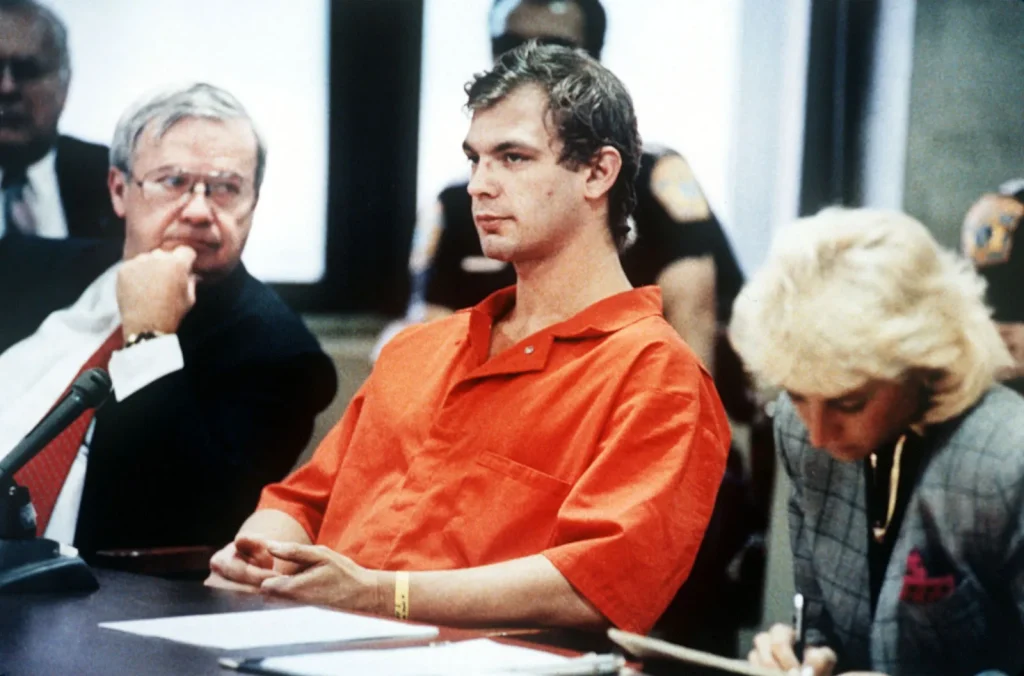
Jeffrey Dahmer Fridge: A House of Horrors
Jeffrey Dahmer’s refrigerator became a nightmarish focal point during the investigation into his crimes. In a chilling contrast to its ordinary purpose, Dahmer used his fridge to store the remains of his victims.
Upon entering Jeffrey’s apartment, police officers were struck by a foul odor emanating from the kitchen. Inside the refrigerator, they made a series of gruesome discoveries that solidified the extent of his horrific acts. The fridge contained:
- Several human heads, some wrapped in plastic bags
- Body parts, including a heart and other organs
- Open containers of blood and other bodily fluids
The fridge served as a grim testament to Jeffrey’s cannibalistic tendencies and his desire to preserve his victims’ remains. The unimaginable sight of human body parts stored alongside everyday food items highlighted the disturbing nature of his crimes and the complete dehumanization of his victims.
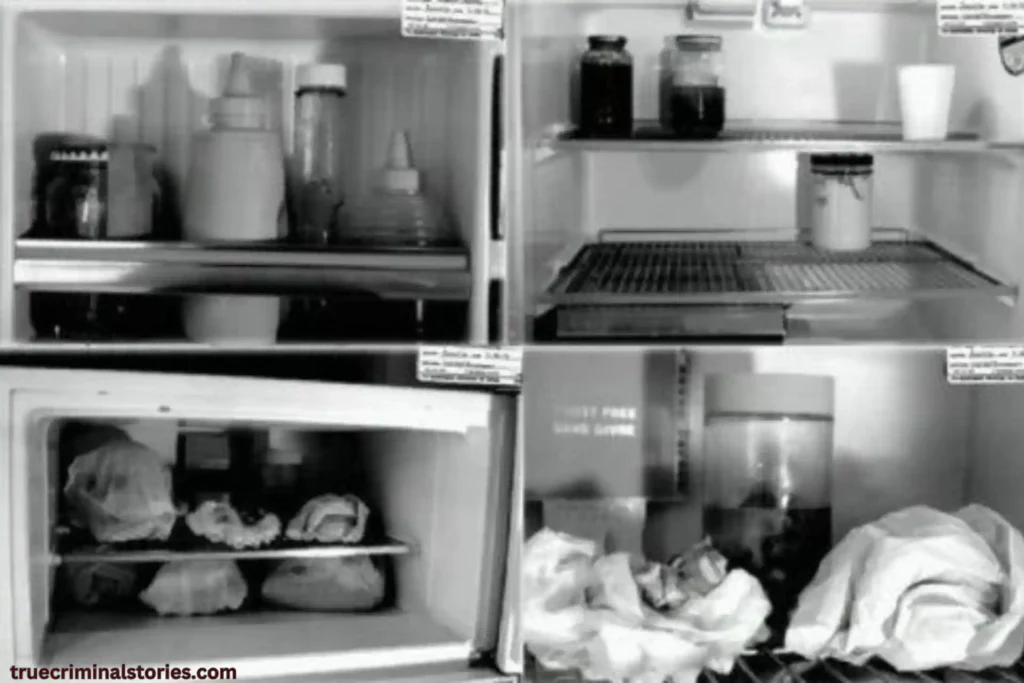
The remains found in the fridge provided crucial evidence, enabling the identification of some of Jeffrey’s victims and revealing the extent of his crimes. It became a chilling symbol of Jeffrey’s depraved mind and his complete disregard for human life. The gruesome contents of Jeffrey’s fridge shocked the nation and further cemented his reputation as one of the most notorious serial killers in history.
Justice Finds Jeffrey Dahmer (Trial)
The trial of Jeffrey Dahmer, which commenced in January 1992, was a media spectacle that captivated the country. The gruesome details of his crimes were laid bare for the world to see, fueling a mix of fascination, revulsion, and morbid curiosity. Jeffrey, represented by a team of experienced attorneys, entered a plea of guilty but insane, arguing that he was not responsible for his actions due to mental illness.
However, the jury ultimately rejected this defense, finding Jeffrey sane and fully accountable for his horrific crimes. The evidence against him was overwhelming, and his chilling confessions left no room for doubt. In February 1992, he was convicted on 15 counts of first-degree intentional homicide and sentenced to 15 consecutive life terms in prison, a punishment befitting the monstrous nature of his deeds.
Life Behind Bars: The Final Chapter
Following his conviction and sentencing in 1992, Jeffrey was incarcerated at the Columbia Correctional Institution in Portage, Wisconsin. In the confines of prison, away from the public eye, Jeffrey’s life took on a new dimension. He began to grapple with the magnitude of his crimes, expressing remorse and seeking solace in religion. He became a born-again Christian, immersing himself in Bible study and attending religious services. He also sought to understand the psychological underpinnings of his actions, participating in therapy sessions and attempting to come to terms with the darkness that had consumed him.
Despite his apparent efforts to make amends, Jeffrey’s notoriety followed him into prison. His gruesome crimes had made him a household name, and he became a target for other inmates who sought to punish him or make a name for themselves by attacking a notorious figure. While in prison, Jeffrey was assaulted on multiple occasions, his life constantly under threat.
Jeffrey Dahmer Last Meal and a Violent End
On November 28, 1994, Jeffrey Dahmer The Milwaukee Cannibal ate his last meal—an ordinary grilled cheese sandwich. He was assigned to clean the bathrooms with two other inmates, Jesse Anderson and Christopher Scarver. While unsupervised, Christopher attacked Jeffrey and Jesse with a metal bar, inflicting fatal injuries. Jeffrey was pronounced dead an hour later, his life ending in a brutal act of violence that mirrored the brutality he had inflicted on so many others.
The motives behind Christopher’s attack remain unclear. Some speculated that it was an act of revenge for Jeffrey’s crimes, while others suggested that Christopher was mentally unstable and acted on impulse. Regardless of the reason, Jeffrey’s death brought an end to a life marked by unspeakable horrors and a legacy of pain and suffering.
His death closed a dark chapter in American history, but the scars left by his crimes continue to haunt the victims’ families and the community. His story serves as a chilling reminder of the depths of human depravity and the importance of recognizing and addressing the warning signs of violence before it’s too late.
Jeffrey Dahmer’s Legacy of Evil
Jeffrey Dahmer’s crimes sparked debates about mental illness, homophobia, and the responsibility of society to protect its most vulnerable members. His story continues to serve as the potential for evil to lurk beneath the surface of normalcy, and the urgent need for both vigilance and compassion in safeguarding our communities.
Jeffrey’s descent into monstrosity was fueled by isolation, alienation, and a lack of support. By creating communities that are inclusive and offer help to those who are struggling, we can create a society less susceptible to such horrific tragedies.
Where is Jeffrey Dahmer Buried?
Jeffrey Dahmer was not buried. After his death in prison in 1994, his body was cremated, and his ashes were divided between his parents. There was a legal battle over what should be done with his brain. His mother wanted it studied for research purposes, while his father wanted it cremated according to Jeffrey’s wishes. A judge ultimately ruled in favor of his father, and the brain was also cremated.
Jeffrey Dahmer Mugshot: A Chilling Portrait of a Serial Killer
Jeffrey Dahmer’s 1991 mugshot is an infamous and chilling image, capturing the face of one of America’s most notorious serial killers. Taken after his arrest, this photograph has become synonymous with his crimes and continues to haunt the public imagination.
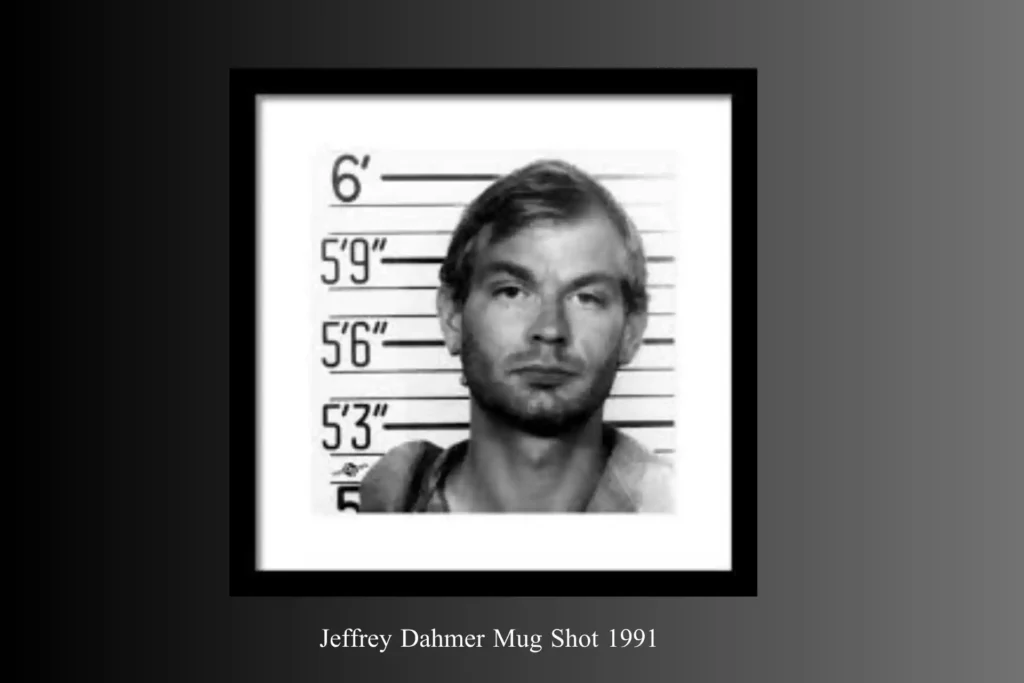
The Photo’s Details
- Blank Expression: Jeffrey’s face is devoid of emotion, his eyes staring blankly into the camera. This vacant stare adds to the unsettling nature of the image, suggesting a disconnect from the horrific acts he committed.
- Unkempt Appearance: His hair is disheveled, and his overall appearance is unkempt, further contributing to the image of a disturbed individual.
- Ordinary Features: Ironically, Jeffrey’s facial features are unremarkable, reinforcing the notion that evil can lurk beneath the surface of seemingly ordinary people.
The mugshot has become a chilling symbol of Jeffrey’s crimes, serving as a constant reminder of the darkness that can reside within seemingly normal individuals. The photo continues to fuel public fascination with Jeffrey’s case, prompting discussions about the nature of evil, the warning signs of psychopathy, and the failures of the justice system. For the families of Jeffrey’s victims, the mugshot represents a painful reminder of their loved ones’ suffering, and the enduring trauma caused by his crimes.
Jeffrey Dahmer Polaroid Photos
The discovery of Jeffrey Dahmer’s polaroid collection sent shockwaves through the investigation and the public consciousness. These photographs, found in his Milwaukee apartment, provided chilling evidence of his heinous crimes.
The photos depicted his victims in various states of undress and dismemberment, often posed in disturbing ways. Jeffrey admitted to taking these images to document his crimes and to relive the experience later. The photographs served as trophies, capturing his victims in a permanent state of vulnerability and objectification.
The existence of these polaroids underscores the depravity of Jeffrey’s actions. They provide tangible proof of his complete disregard for human life and his twisted desire for control. They also offer a disturbing insight into the mind of a serial killer, revealing the depths of his sadism and the meticulous nature of his crimes.
The impact of Jeffrey Dahmer Polaroid Pictures:
- Public Outrage: The release of some of these photos sparked public outrage and horror, fueling the already intense public fascination with Jeffrey’s case.
- Trauma for Families: For the victims’ families, the photographs represent a devastating reminder of their loved ones’ suffering and a violation of their dignity.
- Legacy of Dahmer’s Crimes: The Polaroids serve as a chilling reminder of the monstrous acts committed by Jeffrey and the importance of recognizing the signs of such depravity to prevent future tragedies.
Jeffrey Dahmer’s polaroid photos are a harrowing artifact of his crimes, offering a disturbing glimpse into the mind of a serial killer.
Jeffrey Dahmer Crime Scene Pictures
Crime scene photographs from Jeffrey Dahmer’s apartment serve as chilling documentation of his horrific crimes. They capture the gruesome aftermath of his murders, offering a disturbing look into the depths of his depravity. These images depict a scene of unimaginable horror:
- Dismembered remains: Body parts scattered throughout the apartment, often preserved in various states of decomposition.
- Evidence of torture: Tools and restraints used to subdue and control his victims.
- Ritualistic elements: Polaroid photographs and preserved body parts kept as trophies, highlighting the sadistic nature of his crimes.

The photographs were instrumental in identifying victims and building the case against Jeffrey. They provide a disturbing window into Jeffrey’s psyche, revealing his motivations and fantasies. The release of some of these photos sparked public horror and fueled the already intense fascination with the case. For the families of the victims, these images are a devastating reminder of their loved ones’ suffering.
How Many Animals Did Jeffrey Dahmer Kill?
While the exact number of animals Jeffrey Dahmer killed remains unknown, it’s well-documented that he engaged in animal cruelty from a young age. This disturbing behavior is believed to have been a precursor to his later crimes against humans.
Accounts suggest Jeffrey’s fascination with dead animals began in childhood. He collected roadkill, dissected them, and even experimented with dissolving their remains in acid – a method he would later employ on his human victims. Neighbors recalled witnessing him impale animal carcasses on sticks and display them in the woods behind his home. Specific incidents include:
- Killing tadpoles with motor oil as a child after a teacher regifted them to another student.
- Allegedly strangling neighborhood dogs and cats.
- Decapitating a dog carcass and placing the head on a stick as a “prank.”
While these are just a few known instances, it’s suspected that the actual number of animals Jeffrey harmed is far greater. His early acts of cruelty to animals demonstrate a disturbing pattern of escalating violence and foreshadowed his horrific crimes against humans. The link between animal cruelty and human violence is well-established. Many notorious serial killers, including Ted Bundy and David Berkowitz, exhibited similar behavior in their youth.
Milwaukee City Jeffrey Dahmer Tour: “Cream City Cannibal”
Milwaukee, Wisconsin, is known for its breweries, its picturesque Lake Michigan shoreline, and, unfortunately, the heinous crimes of serial killer Jeffrey Dahmer. The “Cream City Cannibal” tour, operated by Hangman Tours, offers visitors a chilling glimpse into the life and crimes of one of America’s most notorious murderers.
The tour takes participants on a walking journey through Jeffrey’s former “hunting grounds” in Milwaukee’s historic Walker’s Point neighborhood. It includes stops at locations where Jeffrey picked up some of his victims, as well as establishments he frequented. Tour guides provide a detailed narrative, blending historical facts with chilling anecdotes, painting a vivid picture of Jeffrey’s disturbed psyche and the horrifying events that unfolded in the city.
The tour has faced significant criticism and controversy. Some argue that it exploits the suffering of Jeffrey’s victims and their families, while others feel it’s an important historical and educational experience. Additionally, concerns have been raised about the tour’s potential to attract “dark tourists” who are fascinated by macabre events rather than seeking a respectful understanding of the past.
Jeffrey Dahmer Movies: A Cinematic Exploration of Darkness
The life and crimes of Jeffrey Dahmer, one of America’s most notorious serial killers, have captivated the public for decades. His story has been the subject of numerous films and documentaries, each offering a unique perspective on this complex and disturbing figure. Some notable movies include:
- The Secret Life: Jeffrey Dahmer (1993): This early film, starring Carl Crew, focuses on Jeffrey’s crimes and his eventual capture.
- Dahmer (2002): Featuring Jeremy Renner in the titular role, this movie explores Jeffrey’s psychology and the events leading up to his arrest.
- Raising Jeffrey Dahmer (2006): This film offers a glimpse into Jeffrey’s childhood and the potential influences that shaped his later actions.
- The Jeffrey Dahmer Files (2012): An experimental documentary combining archival footage, interviews, and fictionalized scenarios to examine the impact of Jeffrey’s crimes on those around him.
- My Friend Dahmer (2017): Based on a graphic novel by a former classmate, this film depicts Jeffrey’s teenage years and his struggles with isolation and disturbing impulses.
These films, along with others, delve into various aspects of Jeffrey’s life and crimes. They attempt to understand his motivations, the societal factors that may have contributed to his actions, and the devastating impact he had on his victims and their families.
Jeffrey Dahmer’s Apartment
Jeffrey Dahmer’s apartment, located at 924 North 25th Street, Apartment 213 in Milwaukee, Wisconsin, was the epicenter of his horrific crimes. The seemingly ordinary one-bedroom unit concealed a gruesome reality, serving as both a killing ground and a macabre storage facility for the remains of his victims.
Upon entering his apartment, investigators were met with a scene of unimaginable horror. The stench of decay permeated the air, emanating from various sources within the dwelling. A closer inspection revealed:
- Human remains: Scattered throughout the apartment were body parts in varying states of decomposition. Skulls, bones, and organs were found in drawers, closets, and even the refrigerator.
- Tools of his crimes: Jeffrey’s apartment housed the tools he used to carry out his murders and dismemberment, including a drill, saws, and various chemicals.
- Evidence of his rituals: The apartment also contained evidence of Jeffrey’s disturbing rituals, such as Polaroid photos of his victims and preserved body parts kept as trophies.
Following Jeffrey’s arrest, the apartment building was demolished in 1992. The site now stands vacant, serving as a somber reminder of the atrocities committed within its walls. His apartment remains a haunting symbol of his crimes and the enduring impact they had on the community and the world.
Ariana Grande Jeffrey Dahmer Comments Spark Outrage
In June 2024, during an appearance on the podcast Podcrushed, Ariana Grande recounted an incident from early in her career where, during a Q&A with young fans, she jokingly expressed a desire to have dinner with Jeffrey Dahmer. The comment, made in jest to highlight her past fascination with true crime, resurfaced and sparked significant controversy. Key points of the situation:
- The Comment: Ariana stated that during a Q&A, she told a young fan that she would love to have dinner with Jeffrey Dahmer, citing his “fascinating” nature.
- Backlash: The comment drew strong criticism, particularly from the families of Jeffrey’s victims. They found her statement insensitive and disrespectful, trivializing the immense suffering Jeffrey caused.
- Family Response: The mother and sister of Tony Hughes, one of Jeffrey’s victims, publicly condemned Ariana’s comments, describing them as “sick” and highlighting the ongoing pain experienced by the victims’ families.
- Glamorization Concerns: The incident reignited concerns about the glamorization of serial killers in popular culture. Many criticized the tendency to focus on the perpetrators while overlooking the profound impact their crimes have on victims and their families.

This incident serves as a reminder of the importance of sensitivity and empathy when discussing true crime.
Raising Jeffrey Dahmer: A Disturbing Glimpse into a Serial Killer’s Upbringing
Raising Jeffrey Dahmer is a 2006 film directed by Rich Ambler that focuses on the troubled relationship between Jeffrey Dahmer and his father, Lionel Dahmer. The film portrays the events leading up to Jeffrey’s arrest in 1991, exploring his childhood and adolescence through the eyes of his father.
The film delves into Lionel’s struggle with guilt and questions his role in Jeffrey’s development. He grapples with whether he missed warning signs or could have intervened to prevent his son’s descent into darkness.
Raising Jeffrey Dahmer highlights the missed opportunities to identify and address Jeffrey’s disturbing behaviors, both within the family and by societal institutions. The film raises questions about the interplay of nature and nurture in shaping a serial killer. It examines Jeffrey’s childhood experiences, his fascination with dead animals, and his growing isolation, offering potential explanations for his later actions. The film portrays the devastating effects of Jeffrey’s crimes on his family, showcasing their shock, grief, and the overwhelming sense of betrayal.
The film received mixed reviews, with some praising its exploration of a complex and disturbing subject matter while others criticizing its low budget and lack of depth. It has been accused of being exploitative and sensationalistic, focusing more on the shock value of Dahmer’s crimes than on providing a nuanced understanding of his life. Some critics have questioned the accuracy of the film’s portrayal of events, particularly regarding the level of awareness Lionel had of Jeffrey’s disturbing behavior.
Despite its flaws, Raising Jeffrey Dahmer provides a thought-provoking exploration of the challenges of parenting a troubled child and the devastating consequences of failing to recognize and address signs of mental illness and violent tendencies.
Similar “Serial Killer” Stories
- Richard Ramirez: The Night Stalker Who Terrorized California
- Luis Alfredo Garavito: The Serial Beast
- Rodney Alcala: The Dating Game Killer
- Gilles de Rais: The Dark Legacy of a War Hero
- Moors Murderers: Ian Brady and Myra Hindley
Jeffrey Dahmer Memes: The Uneasy Intersection of Humor and Horror
The existence of Jeffrey Dahmer memes highlights a complex and often unsettling aspect of internet culture. Despite the horrific nature of his crimes, he has become the subject of numerous memes, ranging from dark humor to outright offensive content. This phenomenon raises several important questions:

Why do people make memes about Jeffrey?
There are a variety of possible motivations, including:
- Dark Humor: Some people find humor in the macabre and shocking, and Jeffrey’s crimes offer ample material for such jokes.
- Shock Value: Others may create Jeffrey memes to provoke a reaction or gain attention.
- Desensitization: The constant exposure to violence and tragedy in the media can lead to a desensitization, blurring the lines between reality and entertainment.

Are Dahmer memes ethical?
The ethics of Jeffrey memes are highly debated.
- Exploitation and Disrespect: Many argue that such memes exploit the suffering of Jeffrey’s victims and their families.
- Freedom of Speech: Others defend the right to create and share memes as a form of expression, even if they are offensive.
- The Line between Humor and Harm: The key issue lies in finding the balance between dark humor and causing actual harm or distress.

The existence of Jeffrey Dahmer memes highlights a complex and often unsettling aspect of internet culture. Despite the horrific nature of his crimes, he has become the subject of numerous memes, ranging from dark humor to outright offensive content. This phenomenon raises several important questions:

Books and Documentaries about Jeffrey Dahmer
Read “Monster: The True Story of the Jeffrey Dahmer Murders”

This book provides a chilling account of Dahmer’s crimes from the perspective of the journalist who broke the story. Schwartz offers a detailed look into the investigation, Dahmer’s confessions, and the trial, shedding light on the horrifying details of the case.
Read “The Shrine of Jeffrey Dahmer”

Masters explores the psychological motivations behind Dahmer’s crimes, delving into his troubled childhood, his fantasies, and the ritualistic aspects of his murders. The book provides a disturbing yet insightful look into the mind of a serial killer.
Read “A Father’s Story”

Lionel Dahmer, Jeffrey’s father, shares his perspective on his son’s life and crimes. The book offers a unique and deeply personal insight into the complexities of their relationship and Lionel’s struggle to come to terms with his son’s actions.
Watch “My Friend Dahmer”

Before the gruesome crimes that shocked the world, there was a lonely, awkward teenager named Jeffrey Dahmer. Disney star Ross Lynch brings to life this haunting, unexpectedly funny, and true story of the infamous serial killer’s high school years, based on the acclaimed graphic novel.
FAQs
Was Jeffrey Dahmer Gay?
Yes, Jeffrey Dahmer was gay. He was attracted to men and primarily targeted young men and boys in his crimes. Dahmer’s sexual orientation played a role in his criminal behavior, as many of his murders were driven by his desire to have complete control over his victims, which included acts of necrophilia.
how did Jeffrey Dahmer die?
Jeffrey Dahmer died on November 28, 1994, after being beaten to death by a fellow inmate named Christopher Scarver at the Columbia Correctional Institution in Portage, Wisconsin.
Did Jeffrey Dahmer eat People?
Yes, Jeffrey Dahmer was known to engage in cannibalism. He admitted to eating parts of his victims, including their flesh and organs. This disturbing aspect of his crimes added to the horror and shock they caused.
How many People did Jeffrey Dahmer Eat?
Jeffrey Dahmer admitted to eating parts of his victims, but the exact number of individuals whose remains he consumed is not definitively known. He confessed to cannibalizing portions of some of his 17 victims. Dahmer stated that he ate the biceps, hearts, and thighs of several victims, but he did not consume parts of every person he murdered. The act of cannibalism was part of his desire to have his victims become a permanent part of him.
How was behavior of Jeffrey Dahmer as a Child with Animals?
As a child, Jeffrey Dahmer was fascinated with dead animals, often collecting and dismembering them, which foreshadowed his later violent behavior.
Were any of Jeffrey Dahmer’s victims identified?
Yes, all 17 of Jeffrey Dahmer’s victims were eventually identified. The identification process was challenging due to the nature of his crimes, but forensic evidence and missing persons reports helped bring closure to the victims’ families.